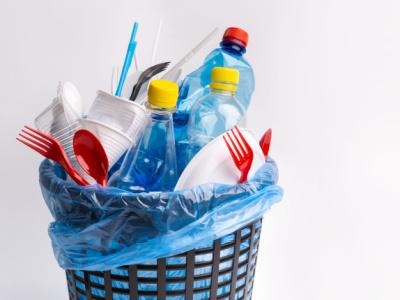Can Dangerous Chemicals in Plastics Put Consumers at Risk?
 In today's modern world, plastic has become an integral part of our daily lives. It is used in a wide range of products, from food packaging to electronic devices. However, many plastics contain dangerous chemicals that can potentially put consumers at risk. People who suffer harm due to exposure to toxic substances in consumer products will need to understand their legal options. An experienced attorney can provide guidance on when it may be possible to recover compensation from the makers of dangerous products or other companies that caused them to suffer harm.
In today's modern world, plastic has become an integral part of our daily lives. It is used in a wide range of products, from food packaging to electronic devices. However, many plastics contain dangerous chemicals that can potentially put consumers at risk. People who suffer harm due to exposure to toxic substances in consumer products will need to understand their legal options. An experienced attorney can provide guidance on when it may be possible to recover compensation from the makers of dangerous products or other companies that caused them to suffer harm.
Some chemicals that are commonly found in consumer products include:
Polystyrene
Polystyrene, which is commonly known as styrofoam, is a widely used form of plastic that is known for its good insulation properties. It is commonly found in disposable foam products like cups and food containers. However, polystyrene contains a chemical called styrene which may pose health risks. It can lead to issues such as:
-
Allergies: Some people may develop allergic reactions when exposed to polystyrene.
-
Hormonal disruption: Styrene can interfere with the normal functioning of the endocrine system.
-
Carcinogenic potential: Several studies have suggested a possible link between styrene exposure and certain types of cancer, such as leukemia and lymphoma.
BPA (Bisphenol A)
BPA is a chemical that is used primarily in polycarbonate plastics, as well as some epoxy resins. These plastics are often found in water bottles, baby bottles, dental sealants, and the linings of metal cans used for food and beverage storage. Unfortunately, BPA can leach into liquids or foods stored in these containers. This can occur when containers are heated or when BPA comes into contact with acidic substances. Some potential health effects associated with BPA include:
-
Hormonal imbalance: BPA mimics estrogen hormone activity within the human body, which could lead to hormonal disruptions and imbalances.
-
Developmental issues: Studies have suggested that exposure to BPA during pregnancy may negatively impact fetal development, affecting behavior and brain function later in life.
-
Reproductive problems: There is concern that BPA exposure may contribute to fertility problems in both men and women.
Polyvinyl Chloride (PVC)
PVC is a widely used plastic known for its durability and versatility. It can be found in various products such as pipes, window frames, flooring materials, toys, and even clothing. However, PVC production involves the use of several toxic chemicals.
Some potential health effects associated with PVC include:
-
Respiratory issues: The manufacturing process of PVC releases dioxins into the environment, and these chemicals can cause respiratory issues when inhaled.
-
Liver damage: Long-term exposure to some chemicals used in PVC production has been linked to conditions affecting the liver.
Phthalates
Phthalates are a group of chemical compounds that are used as plasticizers in many different types of plastics. These chemicals may increase the flexibility and durability of products, but there are also concerns about potential health risks.
Evidence suggests that phthalate exposure may contribute to:
-
Hormonal disruption: Phthalates mimic hormones present within the human body, leading to potential hormone imbalance issues.
-
Reproductive problems: Some studies indicate a possible link between phthalate exposure and reproductive problems such as reduced fertility or birth defects.
-
Asthma and allergies: Exposure early on in life might increase a child’s risk for developing respiratory disorders or other types of allergies.
Addressing Harm Caused by Dangerous Plastics
While there is ongoing research regarding these dangerous chemicals found in plastics, it is important for consumers to become informed about potential risks and make educated choices about the products they use. Consumers may be able to take steps to minimize exposure to dangerous chemicals by:
-
Avoiding microwaving plastic: Heat can cause chemicals like BPA or phthalates to leach into food or beverages when microwaving plastic containers.
-
Opting for safer alternatives: Products that are labeled as BPA-free or made from safer materials such as glass or stainless steel may be preferable over plastic products.
-
Reducing use of single-use plastics: Limiting the use of products such as disposable water bottles or foam containers, which tend to contain harmful chemicals, can help limit exposure to toxic substances.
Contact Our Pittsburgh Toxic Chemical Exposure Attorneys
If you have any concerns about dangerous chemicals in plastics and their potential health effects, do not hesitate to reach out to Colianni & Leonard LLC for professional advice. Our Allegheny County toxic substance injury lawyers can help you determine your options for addressing illnesses or health issues related to toxic chemicals. We can advise you on how to pursue compensation from the manufacturers of products containing harmful substances or other companies that caused you to be exposed to dangerous chemicals. Contact us at 412-680-7877 for a free consultation.

 412-680-7877
412-680-7877






